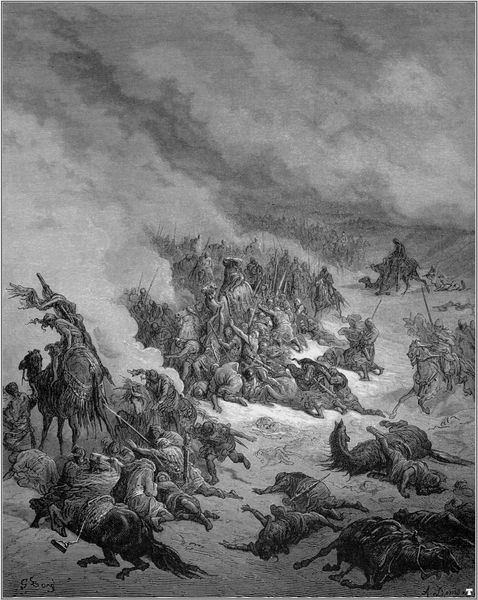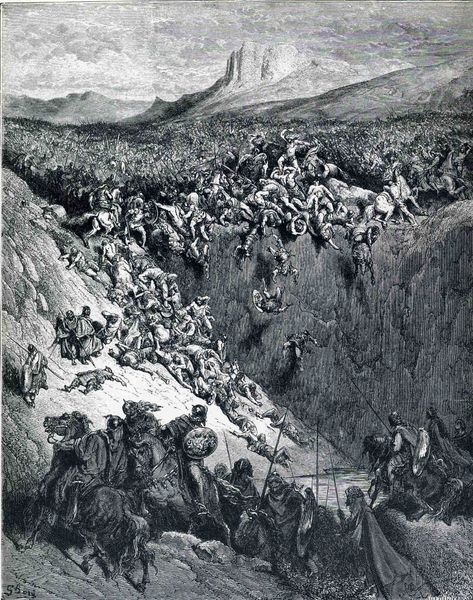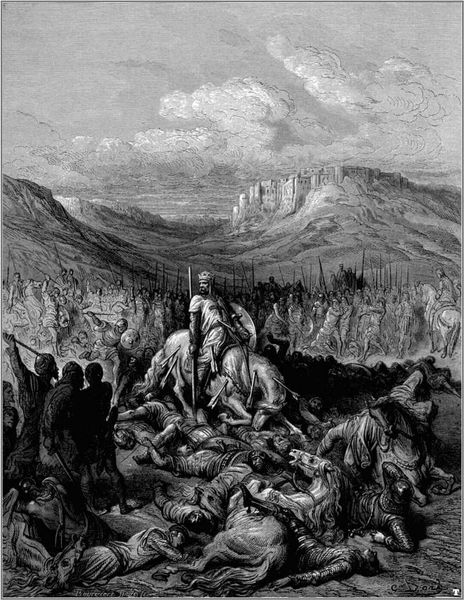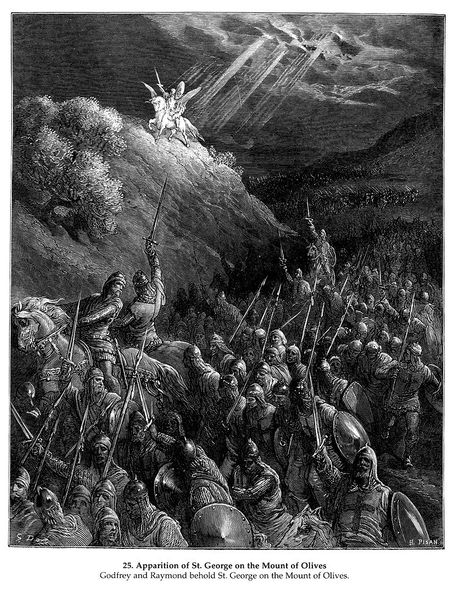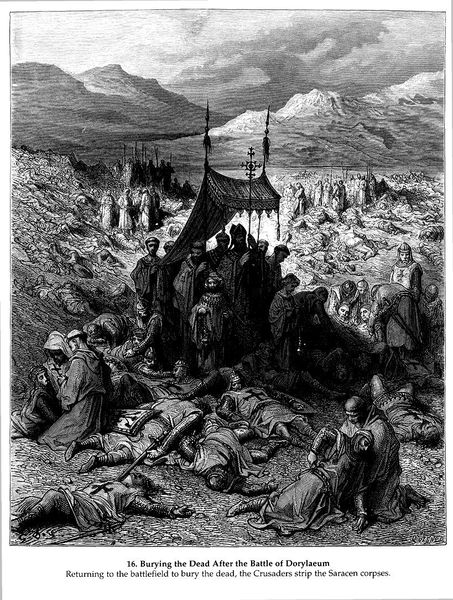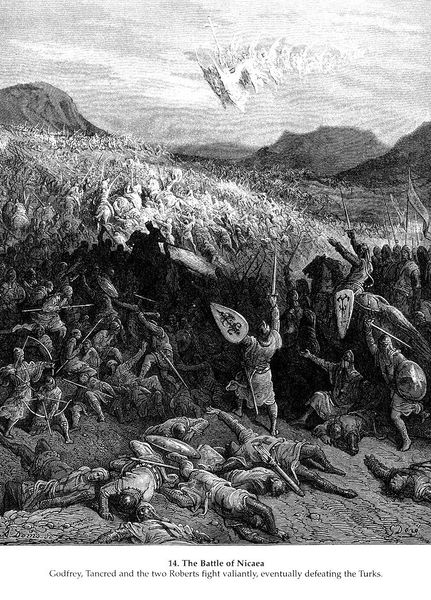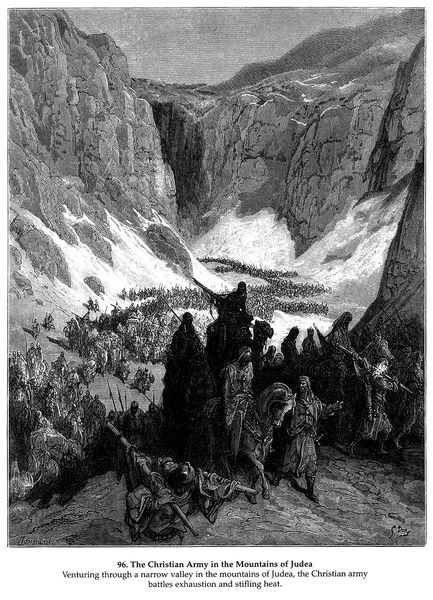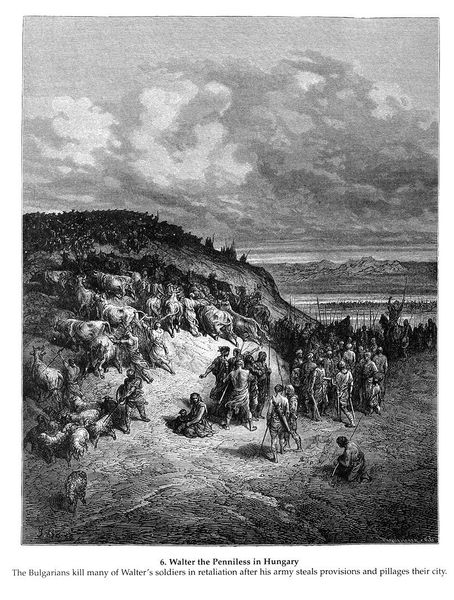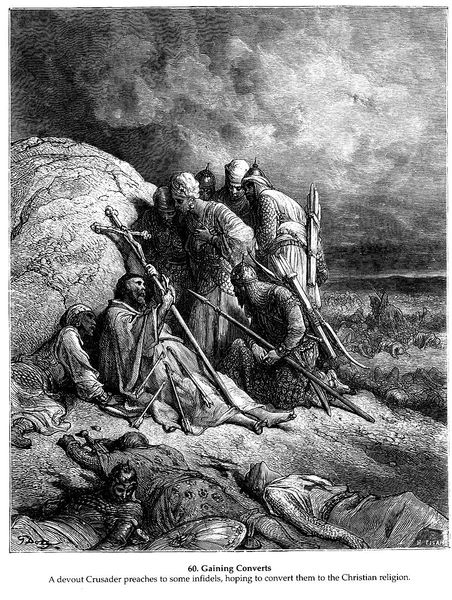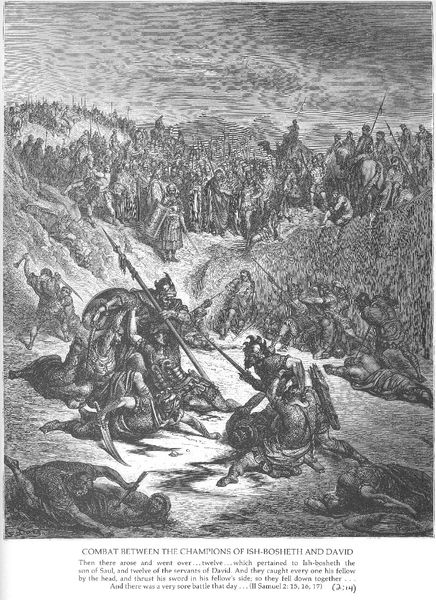
drawing, photography, engraving
#
drawing
#
black and white photography
#
countryside
#
war
#
landscape
#
nature
#
photography
#
romanticism
#
black and white
#
monochrome photography
#
history-painting
#
monochrome
#
engraving
#
monochrome
Copyright: Public domain
Curator: What an incredible spectacle of monochromatic detail! My eyes are immediately drawn to the churning mass of soldiers on horseback, they practically burst from the engraving! Editor: Indeed. This dynamic image is titled "Ottomans penetrate Hungary" and is a work by Gustave Dore. The medium employed is engraving, and this particular image showcases a battle scene, full of drama and tension. Curator: Considering the materiality of engraving – the skilled labor required to etch the image into a metal plate, then the printing process, speaks volumes about image dissemination at the time. This wasn’t some quickly sketched drawing; it was intended for reproduction and wide consumption, to circulate narratives of conflict. Editor: Absolutely, the politics of imagery are central here. The very title directs our gaze and tells us how we are meant to read the events—as a violent penetration. How does the act of representing such conflict through dramatic visual language contribute to the overall historical understanding—and possibly even the justification—of it? Curator: The contrast Dore achieves using engraving techniques is astounding. Look at the stark whites of the clouds set against the deeply etched, shadowed masses of the battling forces. The printing processes involved also played a role. The artist likely relied on workshops to produce such volumes; therefore, this engraving bears traces of collaborative effort and wider societal forces. Editor: You are right. Consider where these images ended up – illustrated newspapers, books distributed across Europe. Dore’s romantic interpretation of historical events likely molded public perception of these events, imbuing them with an element of high drama, while sometimes distorting the nuances of geopolitical complexities. The cultural function of war imagery must be viewed with care. Curator: For me, understanding the laborious printmaking required for distributing the work is interesting as an exploration of nineteenth century art practices. It encourages questions about skill, labor, and access during Dore's time. Editor: I agree, and considering its historical function alongside its romantic rendering is equally valuable. Curator: Precisely! A complex image with multiple angles of approach. Editor: Indeed. Thanks to art we can have discussions like this.
Comments
No comments
Be the first to comment and join the conversation on the ultimate creative platform.

